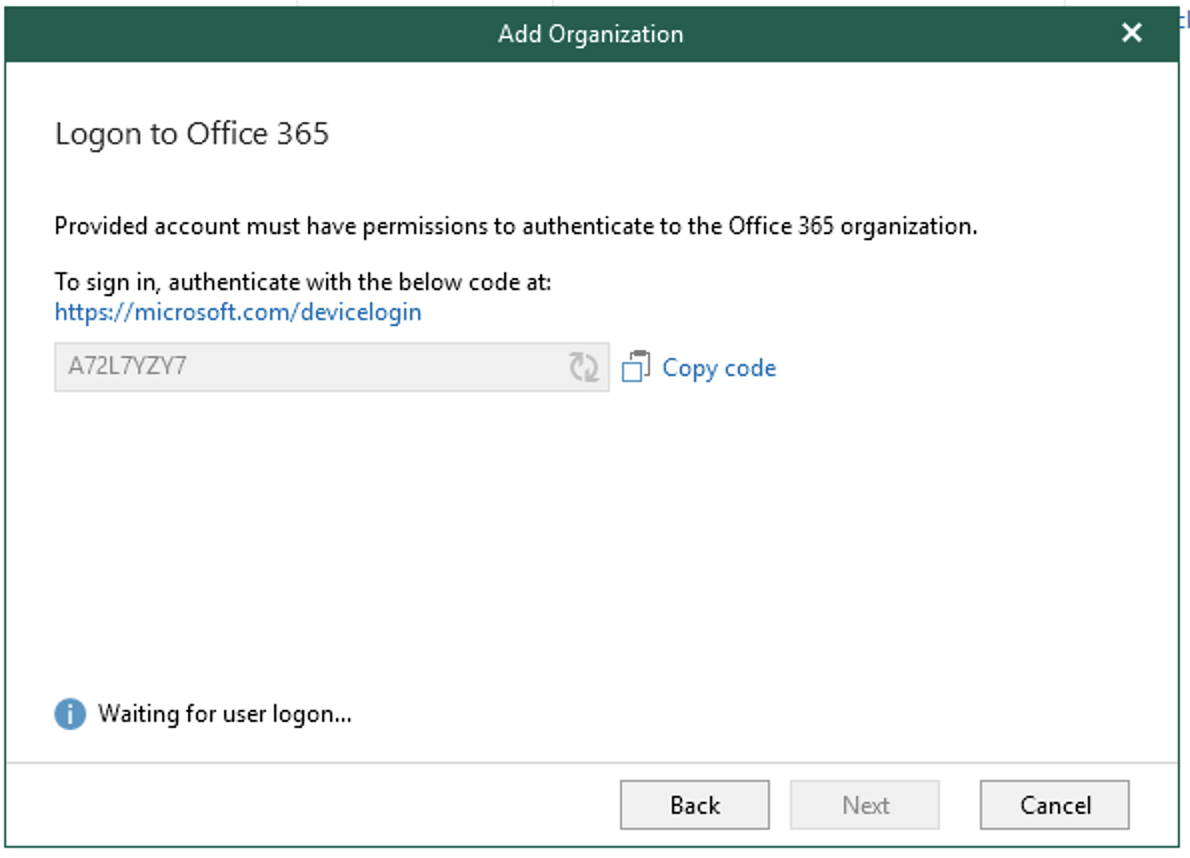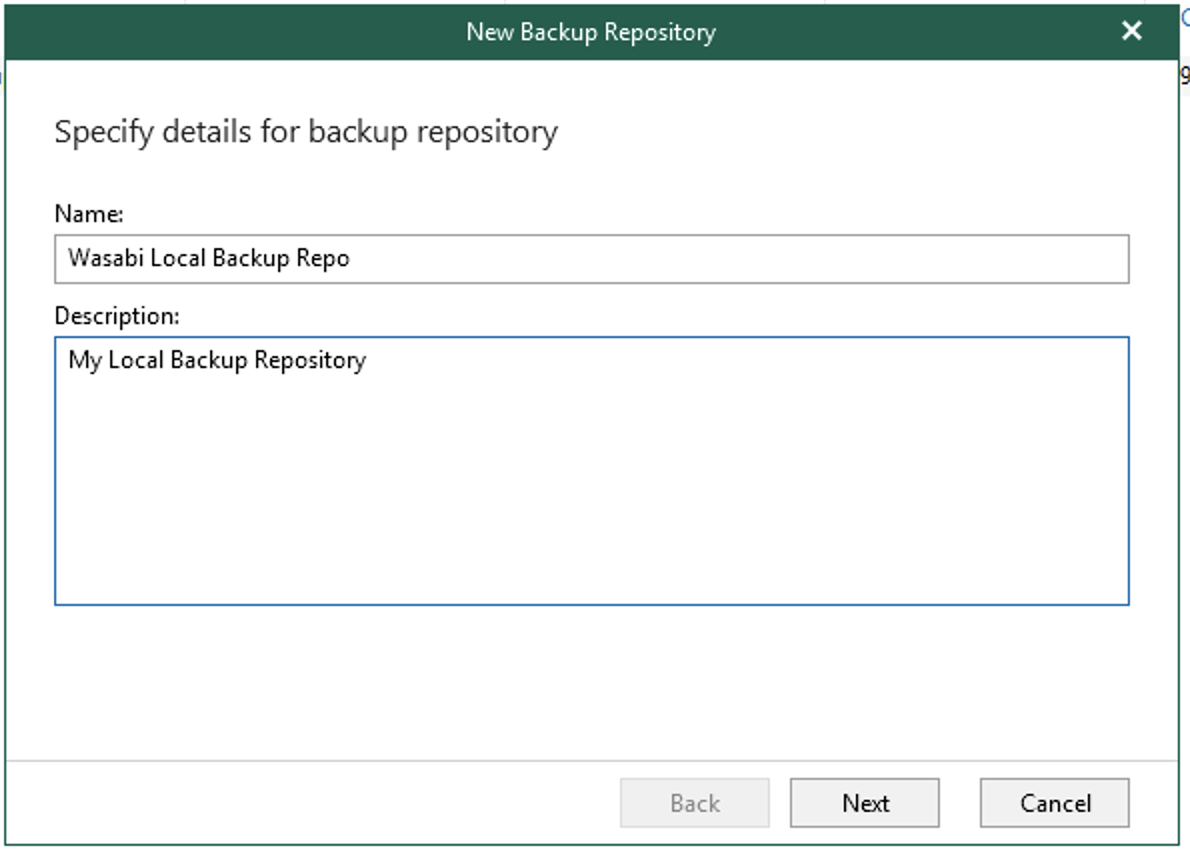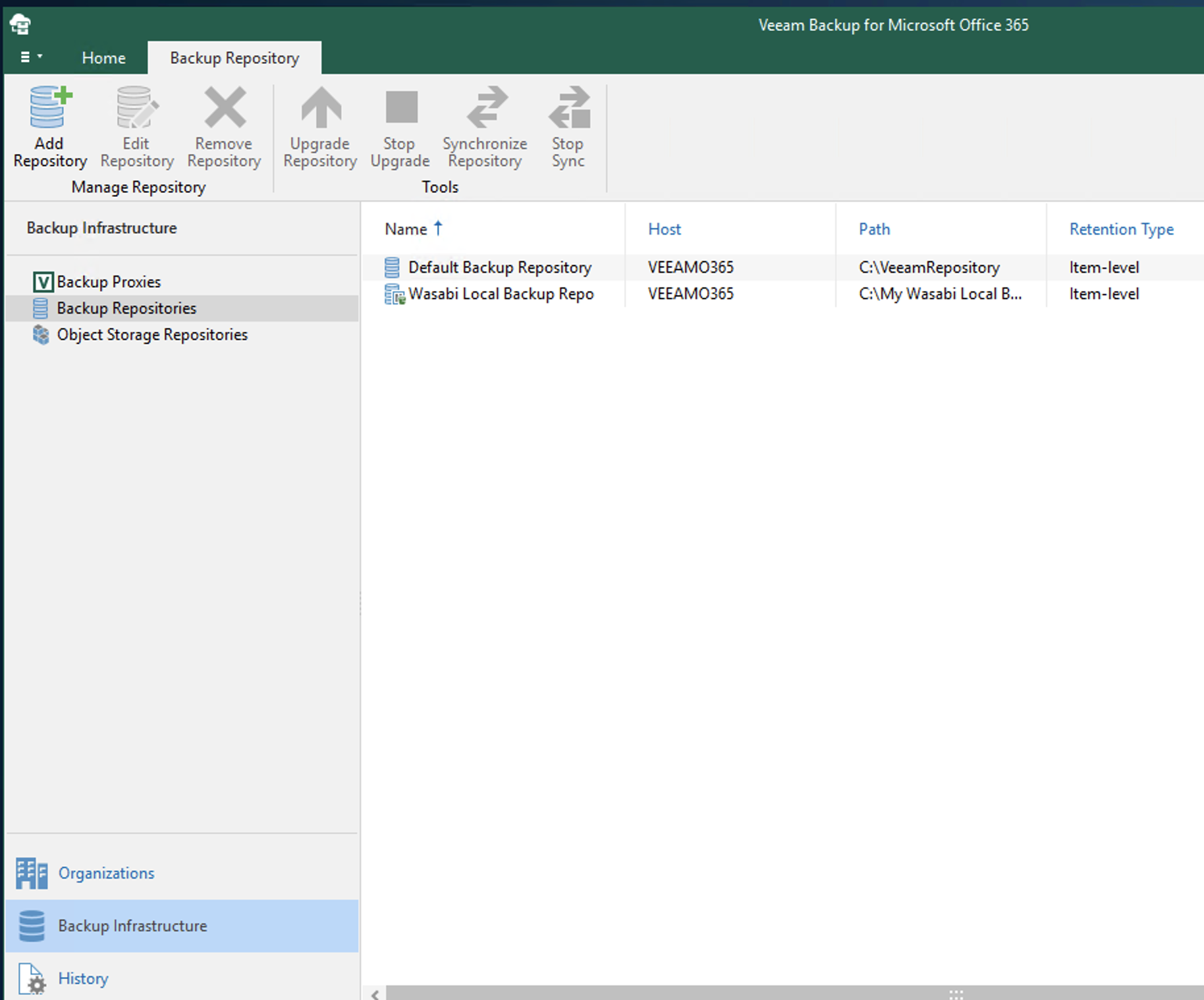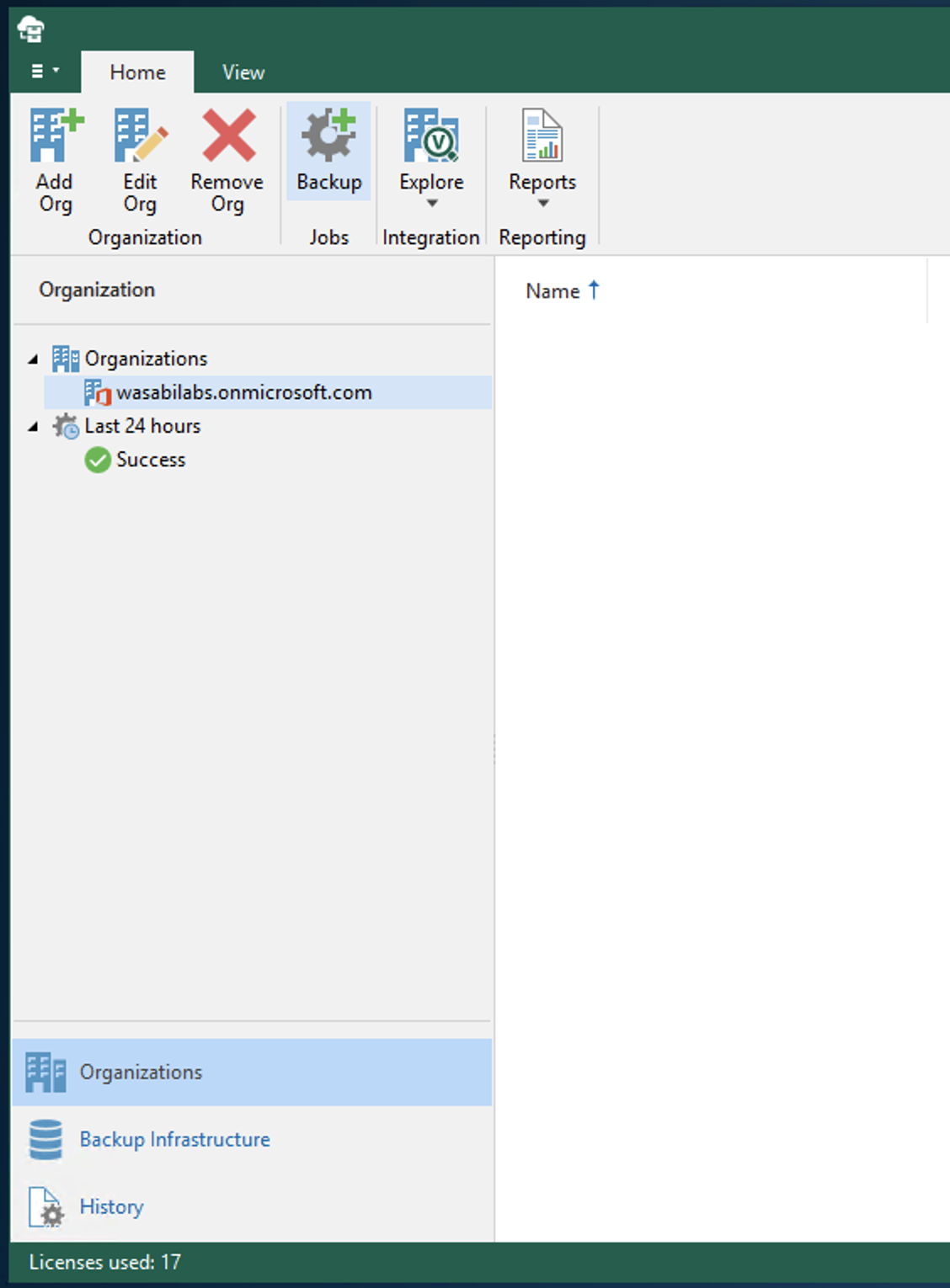How do I use Veeam Backup for Office365 v5 with Wasabi?
Veeam Backup for Microsoft Office365 v5 has added support for backing up Microsoft Teams up to Wasabi, as well as the previously supported Microsoft Exchange, Sharepoint, and OneDrive.
Wasabi has been validated to work with Veeam Backup for Office365 v5.
Prerequisites
Veeam Backup for Office365 v5 or higher
Active Microsoft office365 account
Active Wasabi Cloud Storage account
Downloading and Installing Veeam Backup for Microsoft Office 365
To download and install Veeam Backup for Office 365, refer to the documentation provided by Veeam.
Adding the Organization
Navigate to the Organizations tab. Right-click Organizations, then click "Add organization...".

Select Microsoft Office365 from the drop-down. Check the boxes to select the services you want. Click Next.

In the Region drop-down menu, select Default. Select either Basic Authentication or Modern Authentication, depending on your configuration. Click Next.
For this scenario, we are using Modern Authentication with no legacy authentication protocols.

Select Register a new Azure AD application automatically and click Next.
We are going to let Veeam register a new Azure AD user with required permissions in this example.

Enter a Name for Veeam to register with Azure AD. Click Install.
Optionally, check “Allow this application to enable export mode for Sharepoint Web Parts..." if you want Veeam to back up customized SharePoint Online sites.

Select your certificate type. Click Next.
In this example, we are generating a new certificate, but you can choose to select/import your own certificates if necessary.

Leave the default certificate name or update it. Click Finish.

The registration information is now complete. Click Next.

Authenticate with Office365 and click Copy Code. Click the URL provided.
Once you click the URL (https://microsoft.com/devicelogin), a browser window will pop up. Complete the authentication with Office365 through the browser window.

Enter the code you previously copied. Click Next.

This screen shows that you have completed the authentication process. Close the window.
If you have not previously set up two-factor authentication to your AD account, you may have to go through the process of setting up two-factor authentication. Once you finish setting up two-factor authentication, you should see a successful sign-in to the Command Line Interface Application, and can then close the window.

Return to the Veeam Organization Setup. Click Next.
You should see a green checkbox that confirms that you are now authenticated to Office 365. If not, work with your Veeam Support Team and Microsoft Support Team to resolve the issue.

Verify the connection and organization parameters. Click Finish.
All of these steps should complete successfully. If not, work with your Veeam Support Team and Microsoft Support Team to resolve the issue.

You will now see your newly created Organization in the list.

Adding the Wasabi Hot Cloud Storage Repository
Navigate to the Backup Infrastructure tab. Right-click Object Storage Repositories and click "Add object storage...".

Input a Name and Description. Click Next.

Select S3 Compatible. Click Next.

Input your Service URL and Region. Click Add to add your Wasabi Access and Secret Keys. Click Next.
This configuration example discusses the use of Wasabi's us-east-1 storage region. To use other Wasabi storage regions, use the appropriate Wasabi service URL as described in Wasabi Service URLs.

Select your bucket from the drop-down and click "Browse…". Either select an existing directory or click New Folder to add a new folder. Click Finish.

You should now see your newly created Object Storage Repository.

Adding a Local Backup Repository
Right-click Backup Repositories. Click “Add backup repository…".

Input a Name and Description. Click Next.

Leave the default backup proxy or select an alternative, if you are using one. Click "Browse…".

Create a new folder or select an existing one. Click OK, then click Next.

Check Offload backup data to object storage. Select the previously created Wasabi Object Storage Repository and click Next.
Optionally, encrypt the data that Veeam uploads to Wasabi. This will be third-party encryption provided by Veeam.

Select your retention policy. Click Advanced.
Refer to the Veeam Docs about choosing the proper retention policy type.

Select your retention policy scheduling and click OK. Click Finish.

You will see your newly created Local Backup Repository.

Creating a Backup Job
Click the Organizations tab. Select your organization and click Backup.

Input a Name and Description for your backup job. Click Next.

Select what you want to backup and click Next.
Veeam allows you to backup your entire organization or, alternatively, select specific objects in your organization. In this example, we are backing up the entire organization. You may want to only back up certain groups, depending on your needs. This is handy in specific use cases, where different groups may have different retention periods. You can create multiple jobs, each backing up specific groups, and apply different retention policies to each.

If any data needs to be excluded, select it here. Click Next.
Veeam allows you to exclude specific objects from a backup. For instance, you may want to exclude specific internal users or groups from being backed up.

Select the Wasabi Local Backup Repository that was previously created. Click Next.
You can choose a different backup proxy if you are using this feature. Otherwise, leave the default.

Select the scheduling for the job you had just created. Click Create.
In this example, we have also chosen to start the backup job when the "Create" button is clicked. This will kick off the new job immediately.

You will see the status of your newly created job change to Running.

To view the statistics of your newly started job, click the Running tab.

Once your job completes, you can see the full statistics.

Verify that your data is being backed up to Wasabi by logging into the Console, navigating to the bucket used for Veeam Backups for Office365, and looking for the data.
